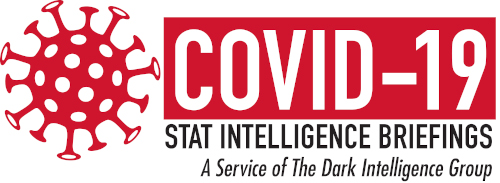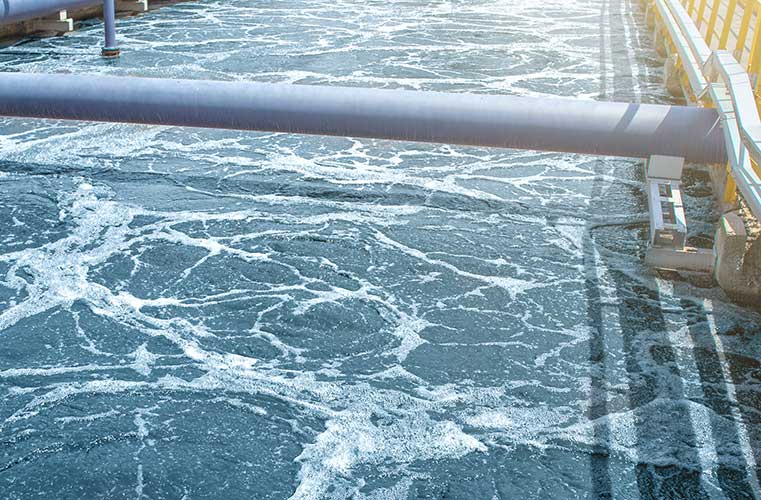Clinical laboratories and pathology groups may have new demand for SARS-CoV-2 diagnostic testing as sewage testing is considered a potential source for COVID-19 epidemiological data.
While human feces are not thought to transmit SARS-CoV-2, genetic material of the virus (RNA) detected from feces in wastewater may give officials a new type of analysis for monitoring the outbreak in communities: sewage testing.
This potential highlights the role of waste water-based epidemiology where sewage is analyzed for markers of the novel coronavirus. Such technology has already been used in relation to other infectious diseases, such as influenza and gastrointestinal viruses, as well as for the detection of illicit drugs.
In the article titled “Cape Canaveral finds more coronavirus in city sewage,” Florida Today reporter Jim Waymer explained the significantly higher concentration of genetic material from the novel coronavirus in late June 2020 compared to lower levels detected one month earlier, through a pilot program of wastewater testing in that city.
Other communities and metropolitan areas along the East Coast, including in Massachusetts, Maine, New York, and others elsewhere, have been targeted for wastewater SARS-CoV-2 coronavirus testing. Some who are active in the research have called for the development of a national wastewater surveillance program for SARS-CoV-2.
In contrast to the Cape Canaveral report, traces of SARS-CoV-2 in Massachusetts wastewater that was analyzed appear to have peaked in spring, with a drop and low around late June, according to reports published by the Boston Globe.
Potential of Community Sewage Analysis for SARS-CoV-2 Coronavirus Surveillance

Vincent Sapienza, New York City Commissioner of the Department of Environmental Protection, was quoted in the Wall Street Journal about the potential of analyzing sewage to detect the novel coronavirus. (Photo source: NYC.gov)
Vincent Sapienza, New York City Commissioner of the Department of Environmental Protection, told the Wall Street Journal, “Analyzing the sewage, a process that the department regularly does, could be a quick way to get ahead of outbreaks before people start showing up in emergency rooms.”
A spokesperson for the New York Department of Health was quoted in that same article that analyzing wastewater is something New York State is exploring. “Even though wastewater is not known to spread the virus, wastewater surveillance has the potential to provide a community-level indicator of the presence of Covid-19 that could help inform public health policy decisions,” he said.
Researchers at Yale University describe the COVID-19 testing strategy “basically a leading indicator of seven days when it came to testing,” stated Yale University’s Douglas Brackney in the New Haven Register. Brackney is an associate scientist in the Connecticut Agricultural Experiment Station’s Department of Environmental Sciences and a co-author of a study there. The amount of virus found in the stool correlated with hospitalizations three days later, reported the New Haven Register.
Singer: Science Getting Better Organized to Generate Data
In Britain, Newcastle University launched a study to explore the use of sewage waste as a source of COVID-19 epidemiological data. Andrew Singer is the project’s chief researcher and senior scientist at the U.K. Centre for Ecology and Hydrology. “Once the science matures, which will hopefully be on the order of a few months, we will be helping to provide the methods that will be used to generate the data needed to inform decisions on lockdown,” Singer told BBC in a recent interview.
“One of the very few positive things that could come out of COVID-19 is that we recognize that there is data within our wastewater, and that data can be a lifesaver,” Singer said. “If many countries develop this capacity and support it into the future, what is less likely to ever happen again is a pandemic spreading across the world for two months when no one knew it was happening.”
One focus of the Newcastle University research is on developing more accurate quantification of the SARS-CoV-2 viral loads in sewage wastewater. This would allow for correlation of the quantity of SARS-CoV-2 genetic materials with infection rates to develop a model that identifies the percentage of infected individuals in a specific locality.
“SARS-CoV-2 is substantially different from commonly monitored viruses in the environment and methods to track it have not yet been standardized,” stated Dr. Marcos Quintela-Baluja, Research Associate, Newcastle University, via Newcastle University Press. “Measuring SARS-CoV-2 in sewage is more difficult than clinical samples, which is why we are focusing on developing accurate methods to guide public health officials.”
Implication for Clinical Laboratories
The recent spike in COVID-19 across the United States has highlighted the continued need for epidemiological monitoring of infections and the rapid identification of disease hotspots.
According to the Centers for Disease Control and Prevention (CDC), “There has not been any confirmed report of the virus spreading from feces to a person.” While feces is not thought to transmit SARS-CoV-2, there are genetic materials found in the feces of infected individuals that can be detected by PCR testing.
So while the of use of sewage to monitor COVID-19 infections is still in the early stages of development, it is a trend that clinical laboratories and pathology groups should be aware of and follow. This technology could allow clinical laboratories opportunities to pursue strategic relationships with their local governments and to help meet an increased demand for SARS-CoV-2 diagnostic testing.
Clinical laboratories can also support regional management and epidemiological tracking of COVID-19 outbreaks by suggesting strategies for capitalizing on the unique population data that sewage samples may offer. While this technology is still in its infancy, the use of sewage monitoring may provide useful data on infection trends that laboratories can help analyze.

—By Caleb Williams, Editor, COVID-19 STAT
Related Resources:
BBC News: Coronavirus: Testing sewage an ‘easy win’
Cape Canaveral finds more coronavirus in city sewage
CDC Frequently Asked Questions: Is the virus that causes COVID-19 found in feces (stool)
Newcastle University: Work begins on UK system for detecting COVID-19 in wastewater
WSJ: New York City Considers Testing Sewage for Coronavirus
NBC: In search for a coronavirus early warning system, scientists look to the sewers
Yale study shows sewage predicts number of coronavirus cases






